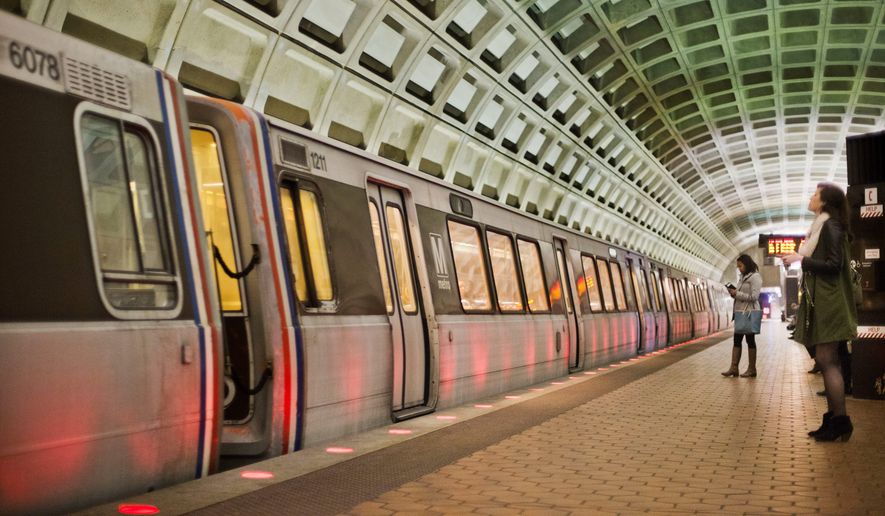Just hours after Metro had touted a “significant improvement” in train reliability, a small fire on the Red Line at Gallery Place left rush-hour passengers waiting up to 30 minutes as trains single-tracked through the evening on Tuesday.
Statistics show that Metro has reduced offloading passengers by more than 50 percent this year compared to the same period last year, but day-to-day riders say they’re still frustrated with the beleaguered transit system.
“Some of us have jobs. Constantly being late because you don’t know if Metro is going to run on time causes hardships,” said Jules Rucker, who lives near the Addison Road Metro station.
Mr. Rucker said his bosses now know the problem and are more understanding about employees being late because of Metro delays. But that wasn’t always the case.
“I almost got written up a couple times,” he said. “You can’t really plan for the delays.”
Jim Mitchell, who got caught up in Tuesday evening’s Red Line delays, said he understands that Metro’s yearlong SafeTrack program repairs have caused some delays, but he added that the problem has gotten out of hand.
“Even with the repairs, it’s ridiculous,” he said. “The amount of times they’re offloading trains is insane.”
When told about Metro’s 50 percent reduction in offloaded trains this year, Mr. Mitchell was frank with his opinion: “I don’t believe it.”
Metro reported Tuesday afternoon that trains are far more reliable this year due to the ongoing, accelerated retirement of all 1000 and 4000 Series railcars, which are the system’s oldest and least reliable. That, combined with a “get well” maintenance program on other railcars, has greatly cut the number of offloads each day.
So far, 70 percent of 1000 Series railcars and nearly half of 4000 Series railcars have been removed permanently from service. All of the older cars are expected to be taken out of service by the end of the year.
“These are all signs that Metro is starting to get ’back to good,’” Metro General Manager Paul Wiedefeld said, using the motto of his program to get the system running smoothly again. “Once we complete the yearlong SafeTrack program in June, customers will notice their commutes are more predictable — and more likely to be on time.”
In the first three months of the year, 218 trains were offloaded — a rate of 2.4 offloads per day. That’s compared 433 offloads during the same period last year.
And Metro’s “mean distance between delays,” which measures how far a railcar travels before it encounters a problem, improved by nearly 70 percent. Railcars average 48,064 miles between delays in the first quarter of 2016. That number jumped 81,451 miles in the first quarter of 2017.
Not long after Metro touted those stats, the transit agency sent out a series of alerts telling riders to avoid the Red Line, which was single-tracking due a small fire on the tracks on the Glenmont-bound side of the station.
Twitter users posted pictures of packed platforms, and one rider said she waited for an hour at the Gallaudet station for a train that wasn’t packed with people. And some of those who actually got onto a train reported being stuck for up to an hour on their commute.
Mr. Mitchell was at the Farragut North stop of the Red Line when his train was offloaded Tuesday. He said another came to pick up stranded passengers, but it was on the other side of the platform causing even more problems for riders.
“The platform was a mess,” he said.
The problems got so bad that Metro resorted to asking riders to taking buses to relieve congestion at Red Line stations. By 6 p.m. delays had reached an hour, according to Rail Transit OPS, a Twitter account that tracks Metro performance.
“It seems like there’s no one at the helm who knows what they’re doing,” Mr. Mitchell said.
• Ryan M. McDermott can be reached at rmcdermott@washingtontimes.com.




Please read our comment policy before commenting.